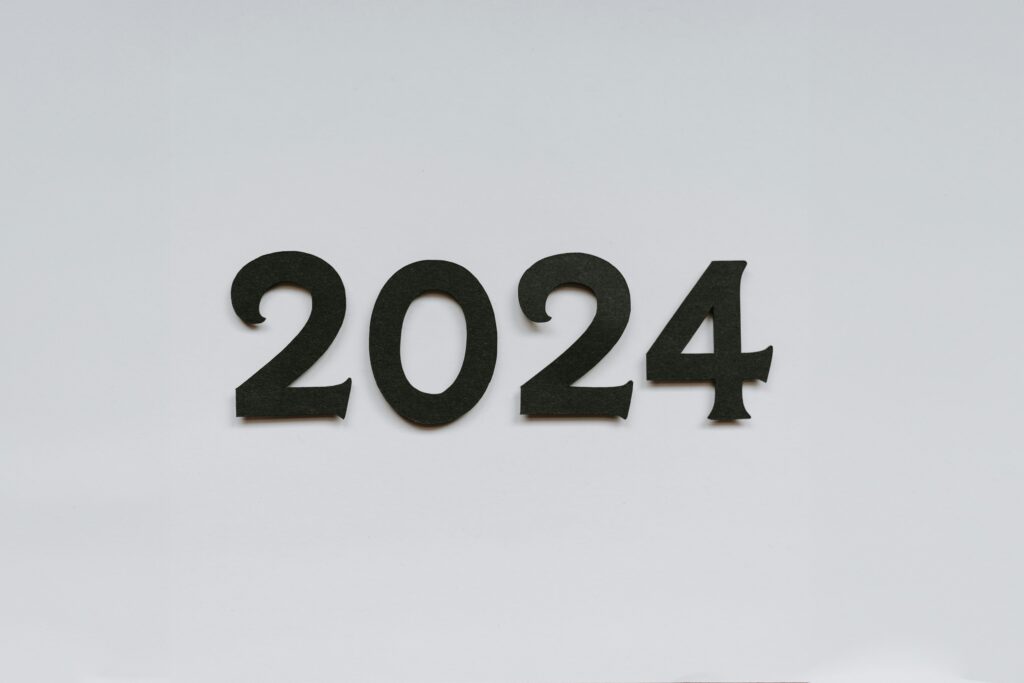Introduction
Vlogging has evolved, but it hasn’t wavered. Through algorithm twists, monetization chaos, and platform fatigue, vloggers keep showing up—and growing. The reason? Audiences still crave real voices telling real stories. In a digital world chasing novelty, familiar and human still wins.
But 2024 brings another wave of change. The algorithms are sharper. AI tools are everywhere. Viewers are savvier. Platforms are tweaking what gets seen and how content earns. The line between entertainment and utility is blurring fast. Creators can’t just post and hope anymore—they need to plan, pivot, and personalize. If you’re a vlogger in 2024, it’s about staying agile, embracing smarter tools, and digging deep into the niche that knows your name.
Before a single ad rolls across your screen, there’s a playbook running behind the scenes. It starts with the advertiser. They choose their goals—maybe it’s more views, more clicks, or just stronger brand awareness. Then they set their audience (age, interests, habits), define the budget, and pick where those ads should show up—YouTube, Instagram, even the homepage of a niche blog.
Enter real-time bidding, or RTB. Think of it like a live auction that happens in milliseconds. Every time someone opens a video or web page, a digital auction takes place. Advertisers bid for that specific viewer, and the highest bid wins the slot.
It’s not humans placing those bids on the fly. That’s where algorithms come in. They decide who to target, when to show the ad, and where it’ll perform best, based on oceans of data: time of day, user behavior, device usage, and beyond.
AI now adds another layer—speed and smarts. Machine learning helps advertisers outbid competitors more efficiently, optimize placement automatically, and figure out patterns no human team could spot. It’s fast, accurate, and always learning. For vloggers, that means your content could be the ideal vehicle—and the algorithm already knows it.
AI Is Speeding Up Workflow—Without Replacing Humans
Creativity still leads, but machines are definitely closing the gap on speed. In 2024, vloggers are leaning into AI to stay nimble—automating tedious tasks like editing drafts, script kickoffs, metadata tagging, and even thumbnail testing. It’s less about replacing anyone and more about cutting the fat from the workflow.
But speed brings risk. When everything is auto-generated, it’s easy for your unique voice to vanish in the noise. The best creators are using machine learning models to smooth the process, not to take over. Think: AI-supported scripting that gives you a launchpad, not a final draft. Or editing software that understands your pacing style from past work.
The key shift? Efficiency without losing what makes a vlogger worth watching. The gear is smarter, the tools are sharper—but it’s still on you to guide the tone, read the room, and make content that actually connects.
Google DV360, The Trade Desk, Amazon DSP—Who’s Doing What Well
2024 is shaping up to be a refining year for demand-side platforms (DSPs). The big players are holding their ground, but not without shifting focus.
Google DV360 remains the heavyweight. It’s bolstering its strength in cross-channel orchestration—especially where YouTube, display, and native ads intersect. The tight integration with Google’s data ecosystem makes it a no-brainer for brands needing breadth. But if you’re looking for more transparency or uniqueness outside the Google bubble, you’re looking elsewhere.
The Trade Desk shines when it comes to data-driven precision and open internet reach. It’s the go-to for those prioritizing programmatic power, and it continues to differentiate itself with more advanced CTV capabilities and UID 2.0 adoption, giving advertisers better identity resolution post-cookie. It’s not the easiest for beginners, but teams that know how to run it, swear by it.
Meanwhile, Amazon DSP is winning the commerce game. With shopper data baked in, it’s unbeatable for product-focused campaigns. Brands using it are seeing direct performance gains, especially in retail media strategies that connect on-site ads with off-site engagement. Still, it’s best suited for those already selling within the Amazon ecosystem.
Smaller, specialized DSPs are now carving out solid niches. Platforms tailored for B2B, healthcare, and retail are giving legacy players competition by offering purpose-built solutions—less fluff, more compliance, and cleaner pipelines to their specific audiences.
And here’s the quiet revolution: self-serve isn’t just for big-budget ad teams anymore. A wave of SMB-friendly DSPs—think simpler dashboards, tighter budgets, clearer ROAS—is enabling indie brands and smaller content creators to set up campaigns on their terms. These tools don’t just democratize access—they actually perform.
So whether you’re a creator with a product line or a micro-agency managing niche clients, the DSP landscape in 2024 isn’t just bigger. It’s smarter, faster, and finally starting to feel less like a black box.
Hyper-Targeting Gets Smarter: IP + Intent + LinkedIn
Precision is the name of the game in 2024’s B2B advertising landscape—and combining intent data with IP targeting is becoming the go-to formula for campaigns that convert. Marketers are moving away from broad segmentation and leaning into hyper-personalized messaging, delivered exactly when buying intent is highest.
Combining IP Targeting with Intent Data
This tandem approach lets marketers reach the right companies and individuals, at the ideal time in the buying cycle.
- IP targeting helps you identify and target visitors from specific companies—even before they fill out a form.
- Intent data reveals which businesses are actively researching your niche, signaling higher purchase readiness.
- Together, they enable tailored messaging timed to behavioral signals.
Rather than waiting for leads to come to you, this proactive strategy ensures your message gets in front of key decision-makers as early as possible—while they’re still forming opinions.
LinkedIn Integrations Are Game-Changers
LinkedIn has evolved into an advanced B2B performance platform—not just a hiring hub or networking tool. Its growing integrations with CRMs, ABM platforms, and intent data providers make it a powerhouse for precision advertising.
- Matched Audiences: Retarget site visitors, engage existing contacts, or upload account lists for targeted reach.
- Data Syncing: CRM uploads and third-party tool integrations allow for real-time audience updates.
- Conversation Ads & Document Sharing: These ad formats engage prospects natively without pushing them off-platform.
For B2B marketers, LinkedIn offers premium reach into C-level professionals and teams actively looking for solutions.
Want to Dive Deeper?
If you’re weighing your options between social ad platforms for B2B, check out this breakdown:
Comparing Facebook Ads vs. LinkedIn Ads for B2B Marketing
It explores audience quality, cost per lead, and industry-specific performance to help you choose the right platform.
Even with AI handling a growing chunk of video creation, targeting, and scheduling, one thing is clear: human oversight still matters. A lot. Algorithms can crunch data fast, but they can’t read a room. They miss nuance—the cultural shifts, the brand voice, the gut-check moments that separate forgettable content from something that connects.
Creative direction still needs a human core. Strategy too. Knowing which audience segment to chase, which trend to ride, or when to break a pattern—that’s not something a script can decide for you. Humans interpret the why behind the numbers, not just the what.
Once a campaign goes live, the job’s far from done. Smart creators test constantly—tweaking titles, thumbnails, even posting times. A/B testing, live feedback loops, and audience segmentation help steer content toward the people who actually care.
And here’s the catch: over-automate and you risk talking to no one. Budgets get torched on impressions that don’t convert. Machines don’t always know when they’re targeting the wrong crowd. That’s where a creator’s instincts kick in—the ability to pivot, refine, and stay authentic.
The bottom line? Automation is a tool, not a substitute. The best creators know where to draw the line—and when to lean back in with a hands-on approach.
Smarter Ads: Customization, Ownership, and Clarity
Advertising in the vlogging world isn’t just about throwing pre-rolls on videos anymore. In 2024, creators are leaning into dynamic creative optimization—meaning ad content that adapts in real time based on who’s watching. Geography, behavior, device—these variables now shape what viewers see. It’s not just smart, it’s scalable. Your haul video in L.A. can show different products than the same video in Berlin.
But smarter ads don’t mean losing control. That’s why building first-party data—info you collect directly from your audience—is becoming non-negotiable. Email lists, community sign-ups, loyalty programs: vloggers who own their audience data aren’t just renting their reach from platforms. They’re building long-term leverage.
Finally, transparency is no longer just nice to have. Partners and sponsors expect clear reporting on where ads show up and how they align with brand safety. Raw numbers aren’t cutting it. Creators who can tell brands where their money goes—and why it works—keep getting the deals. The bottom line: treat ad strategy like content strategy. It needs to adapt, evolve, and build actual trust.
Programmatic is Faster, Smarter, and More Complex Than Ever
In 2024, programmatic content strategy is a different beast. Automation tools can now handle everything from scheduling uploads to dynamic thumbnail testing—faster and more efficiently than any team of interns ever could. But speed isn’t the only upgrade. AI-driven insights are improving recommendations based on watch behavior, regional trends, and even micro-content engagement windows.
Still, this isn’t a hands-off process. Machines can optimize, but they don’t decide your brand voice or messaging. That’s your job. Choosing the right tools matters—some platforms play nicer than others when it comes to tracking data, integrating analytics, or fine-tuning performance in real time.
And don’t underestimate partnerships. Whether you’re using cloud editing platforms, audience targeting tools, or affiliate networks, working with the right stack means staying competitive while keeping your eyes on the big picture. The automation carries the load, but your strategy tells it where to go.


 Nicole Kennedyelar played a pivotal role in shaping the foundation of FLP Stampive, contributing her creative insight and strategic thinking to the platform’s development. With a strong background in digital content creation and audience engagement, Nicole helped craft the site’s tone, structure, and visual appeal. Her attention to detail and passion for modern marketing made her an essential part of the team, ensuring that every element of FLP Stampive aligned with its mission to inform and inspire marketing professionals worldwide.
Nicole Kennedyelar played a pivotal role in shaping the foundation of FLP Stampive, contributing her creative insight and strategic thinking to the platform’s development. With a strong background in digital content creation and audience engagement, Nicole helped craft the site’s tone, structure, and visual appeal. Her attention to detail and passion for modern marketing made her an essential part of the team, ensuring that every element of FLP Stampive aligned with its mission to inform and inspire marketing professionals worldwide.